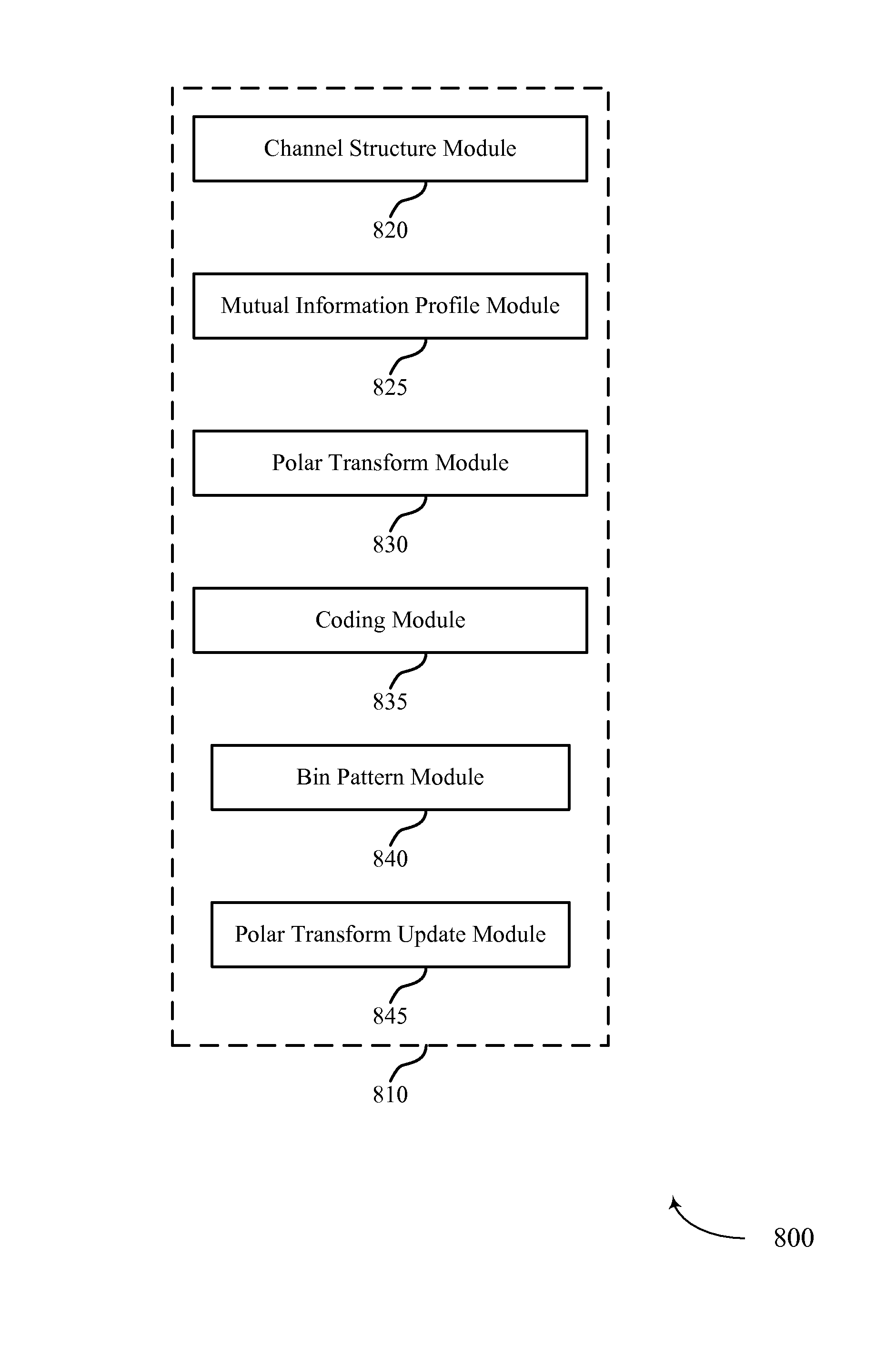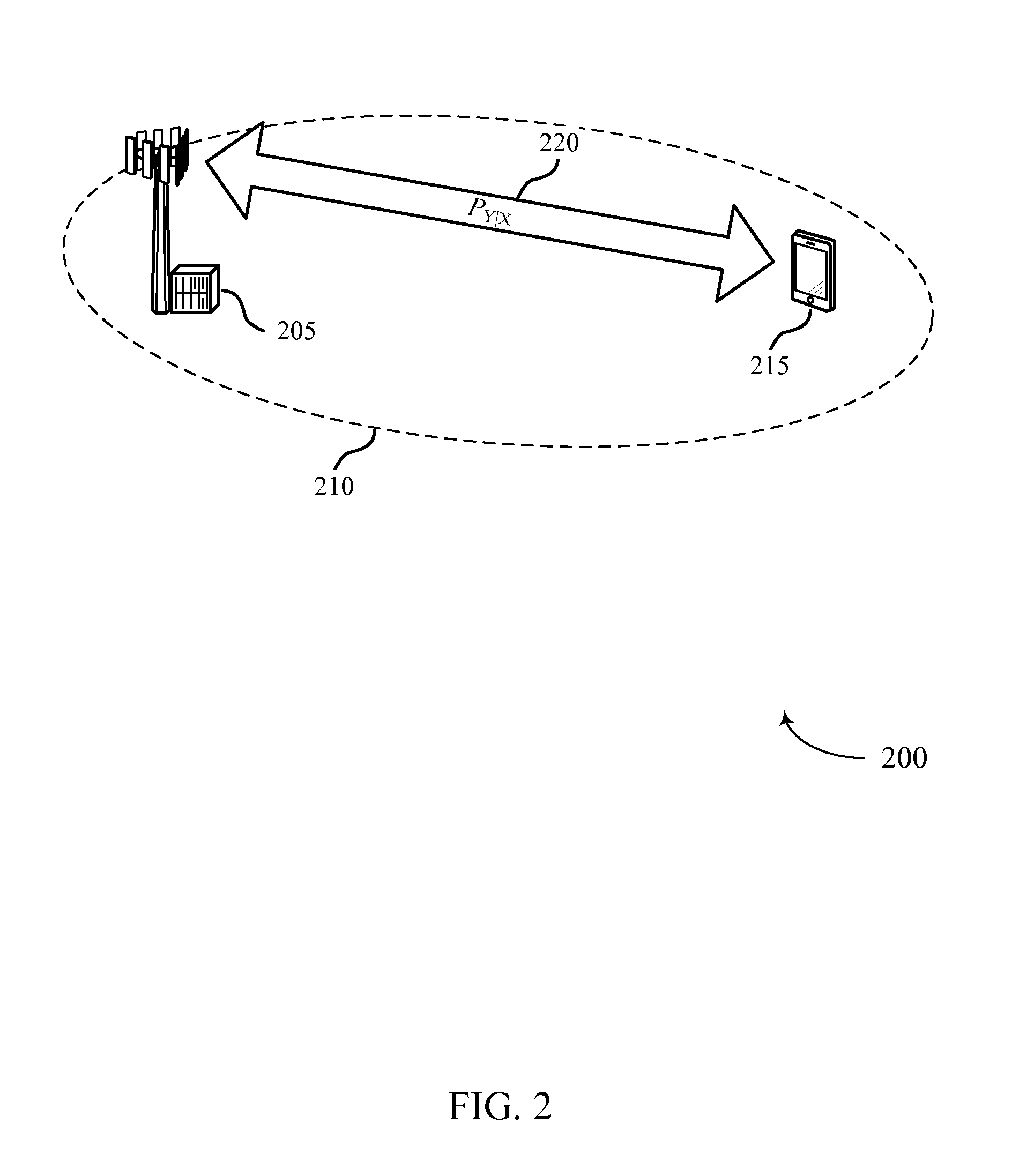Adaptive channel coding using polarization
- Summary
- Abstract
- Description
- Claims
- Application Information
AI Technical Summary
Benefits of technology
Problems solved by technology
Method used
Image
Examples
Embodiment Construction
[0047]The described features generally relate to improved systems, methods, or apparatuses for adaptive channel coding using polarization. A wireless device may adaptively select a parity check matrix to increase the reliability of signal transmission over a noisy channel. For example, polar codes may be used to construct parity check matrices “on-the-fly” based on dynamic channel settings and signal-to-noise (SNR) levels. Polar codes are low-complexity, capacity-achieving codes for point-to-point discrete, memoryless channels. Adaptive polar codes may be generated based on mutual information profiles for polarized subchannels of the noisy channel.
[0048]Wireless transmissions may be sent over noisy channels. A noisy channel may be described by a conditional distribution PY|X(y|x), where input random variable X takes values from an input alphabet, and output random variable Y takes values from an output alphabet. In one example, the input alphabet is a binary input alphabet and the o...
PUM
 Login to View More
Login to View More Abstract
Description
Claims
Application Information
 Login to View More
Login to View More - R&D
- Intellectual Property
- Life Sciences
- Materials
- Tech Scout
- Unparalleled Data Quality
- Higher Quality Content
- 60% Fewer Hallucinations
Browse by: Latest US Patents, China's latest patents, Technical Efficacy Thesaurus, Application Domain, Technology Topic, Popular Technical Reports.
© 2025 PatSnap. All rights reserved.Legal|Privacy policy|Modern Slavery Act Transparency Statement|Sitemap|About US| Contact US: help@patsnap.com



